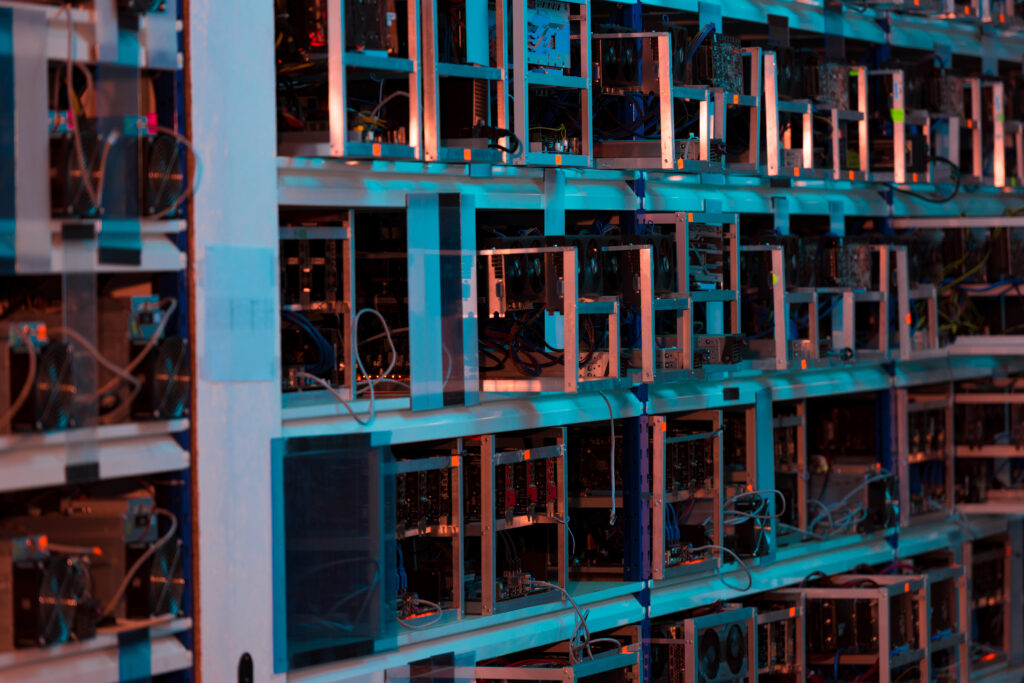Nodes play a critical role in blockchain security from a technical perspective. A cryptocurrency node is a participant processor within a blockchain network. A blockchain node is an open-source, cross-platform runtime allowing developers to set up different services. The peer-to-peer (P2P) protocol allows nodes to directly communicate in the network and transfer data regarding new blocks and transactions.
In the blockchain, network nodes play a vital role in the reliability and correctness of storing the data on the distributed ledger. Each node stores a copy of this distributed ledger. Due to the blockchain nodes, users can access the data and view all transactions stored or conducted on the network.
Launching a network node is practically the only way to connect to the blockchain. Every new node directly contributes to blockchain network decentralisation. This shortens the transaction time and also reduces the cost. Blockchain nodes participate in consensus and share data regarding transactions and the total number of funds. Nodes also confirm transactions, store copies of confirmations, and participate in creating new blocks in the chain, due to which they also obtain rewards. A business that uses nodes is built to receive commissions for transfers and the exchange’s sale or purchase of cryptocurrency assets.
Setting up a Blockchain Node

It is essential to fulfill several requirements to set up a blockchain node. Initially, it was only possible to launch a node on weak equipment. However, blockchains have expanded into memory, processing power, and popular networks. As a result, it’s a critical factor for the successful setting up of a node.
The process of setting up a blockchain node could be elaborated in the steps below:
Step 1: Meet Hardware Requirements
Before deploying a node, you need to clarify the minimum hardware requirements. They may differ for each of the currently existing crypto coins. For example, the minimum requirements for installing a Bitcoin node are:
- You should have 750 GB or more of free disk space available with a minimum read speed of 100 MB/s.
- Your device should have the latest version of Linux, Windows, or Mac OS X.
- You must have a solid-state drive (SSD) capable of performing: 70 MB/s random write and 32 MB/s random read.
- You should have at least 8 GB of RAM and an internet download speed of at least 400 KB/s.
Step 2: Install Node
You have the option to connect a node either with the main network or run it directly on a test network for different purposes such as testing or development. There are various types of nodes on the blockchain, but we will be going through setting up an archival full node on either Bitcoin or Ethereum in this article.
Setting up a Bitcoin Node
To install a Bitcoin node, you must create several folders that store blockchain data in the filesystem. To sync the entire Bitcoin blockchain, at least 500 GB of free space and 8GB of RAM are required.
The process could be very long. You can also encounter several hardware problems. Moreover, an interrupted download would resume from the moment it was initially interrupted. After completing this process, the user can start the process of blockchain synchronisation.
Setting up an Ethereum Node
The Ethereum node runs in the console by default. It performs as a background process through writing service in the system or starting a node on the screen. It is essential to evaluate which mode you have started the node in. If the node is running in test mode, it will be difficult for you to keep track of the recurring transactions carefully.
Three modes can sync an Ethereum node, fast, full, or light mode. Fast mode is the default method used for synchronising Ethereum nodes. There is no download of wallet balances, transaction history, wallet balances, or smart contract nodes for this mode. 380 GB of free space and 8GB of RAM are required.
The full mode can be the most expensive as powerful hardware is required to deploy. You need at least 16 GB of RAM and 500GB of SSD hard disk drive. Even on an SSD drive, the synchronisation of Ethereum archive nodes could take several weeks. If there is an error in the node’s client/software version, it would be essential to re-synchronise the node from scratch.
The light node is the most balanced and most manageable Ethereum mode to synchronise. It has fast synchronisation, uses fewer resources, and pulls up smart contracts and wallet balances.
Step 3: Test the Node
Next, you have to evaluate and assess if the node is working. For doing this, you should also send a request to the node with information regarding the service, or you can also request data from the blockchain. Moreover, you will also have to monitor the node. You can effectively utilise a standard service availability check for the TCP port.
Potential Challenges

There are a few challenges that you may face when setting up a node. Some of the challenges are:
- It is essential to ensure that you don’t have traffic restrictions before the node is deployed, as a significant amount of bandwidth is required. Moreover, you may face challenges if your internet connection is unstable. If node synchronisation with the blockchain network is consistently interrupted, it will be essential to restart it.
- There is a possibility of a computer virus that users could incur on the bitcoin blockchain when deploying a node. Your computer may not be directly affected by those viruses. However, having an antivirus program could move them to quarantine. This will make it difficult for the bitcoin blockchain to function effectively.
- Your node may be vulnerable to hackers as they may find out that a new full node is running. As a result, you should take adequate security measures to ensure your node is not hacked.
Consistently, as the price of crypto assets multiplies, the stakes for the investors get even higher. It has attracted numerous foreign governments to set up their own mining operations and has led companies to invest in purchasing their own power plants.
Crypto nodes have also proliferated in countries where cheap electricity is available or the income generated from crypto gains far outpaces the expense of electricity used.
Get Started With On-Chain Data

It is evident that nodes play a crucial role in a blockchain network. Given the hardware requirements and the technical know-how, it isn’t something that technically inept among us can work with, setting up a blockchain node is exceedingly complex and resource-heavy.
However, there is an even easier way for developers to obtain on-chain data without having to run a node themselves. Access node providers such as RockX are a fuss-free solution to needing to build, test, maintain, and run your own nodes. To empower builders in the space, RockX is giving away $100 in credits until 16 June 2022, Thursday for anyone who would like to try a paid subscription to RockX’s access node provision service.









